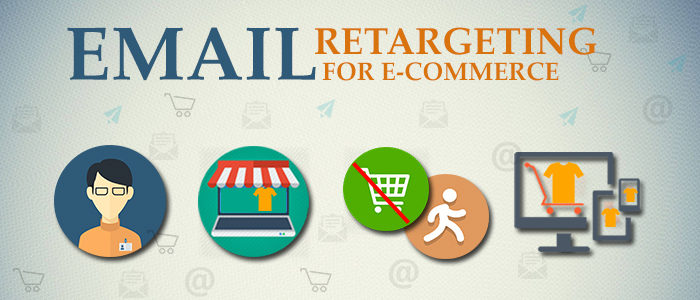Gone are the days of ‘randomness’ in marketing. Now comes the age of finding method in the randomness. Initially, marketing was more like broadcasting about your brand and its offerings, randomly on a mass scale and people who got interested would then probe more and if convinced bought products/services.
Now, marketers first engage in studying the buying behavior of people. Then, use this information to target them systematically to drive them towards a purchase. The customer is targeted at various touch points and remarketing plays an immense role in this process.
Generally speaking, email remarketing is using the information you already have about your customers to refine the information you send them by email.
Benefits of Email Remarketing
The great thing about email remarketing is that it works with customers who have already shown interest in your products and services, so the potential benefits are huge. Moz says that compared with a normal eCommerce conversion rate of between 2% and 4%, the rate for email retargeting conversions can be as much as 41%. According to ConversionXL, Busted Tees got 390% ROI on an email retargeting campaign that showed ads to recent shoppers and encouraged them to buy again.
So, how do we remarket?
1. Segmenting your list
The success of an e-commerce marketing strategy depends massively on segmenting email lists. Remarketing is about sending messages to the right customers at right time. You can break email lists into different segments based on available data. For e-commerce, you can segment list as per
-
Membership – Segment list as per regular or premium members.
-
Coupon Recipient – People who used coupons in last purchases.
-
Email or newsletter sign up – People who signed up for the newsletter.
-
Past purchaser – People who bought products from your website in past.
-
Seasonal shoppers – People who have seasonal purchase history.
-
High LTV – People who have high “Lifetime Value”.
Do not forget to exclude people from your list who unsubscribed or have very low engagement rate with your last sent emails. After you collect the information of consumer behavior, create different categories and fit customers into each category. Based on this segmentation send the right message that will get the most likely response.
There will be prospective customers who added products to favorites or who visited your website and left. Find out which page they last visited. If it was the products page, email more information about your products. Send offer or coupon to people who added products to favorites.

2. Email campaigns
Now that you have created different segmented email lists, its time to create different campaigns for each segment. Your email campaign strategy will largely depend upon segmented list you have created. It is very important to send personalized messages to each user. Each email campaign should be created with consumers’ preferences in mind. Consumers should find the copy interesting and relevant. The email campaign should draw consumers’ attention and have a distinct call-to-action, which drives them back to the cart. Remarketing messages should specifically, distinctly and directly address the target audience. In order to build a connect with the audience remarketing messages should be personalized.
The consumer has viewed / added specific products to the cart. Add the viewed images of these products in the email thus, making it relevant to the user. Personalize each message by adding name or message or special offers. You can create an urgency of action by giving urgent context for sale, or holiday, or availability. Use what you know, send users to relevant products landing pages. Create a focused call to actions, like ‘Shop Now’.

3. Get back the cart abandoners email recipients
People who added products to their cart and chose to leave without buying, send them specific emails that would remind and redirect them to the purchase. These are the people who were intending to purchase so, they will revisit your site again if you follow up with them. Online shopping cart abandonment average is 69.23%And according to Internet Retailer, 66% of cart conversion comes through email. It is possible to get customers back to buy the products by sending promotional emails that offer a discount, coupon or free shipping. You can send some more suggestions, which the customer has not noticed to help him make an informed choice.

4. Social media
Social media also plays an important role in your digital marketing strategy. You can target users on social media by using email ids. Facebook, Google, LinkedIn, and Twitter allows you to upload your segmented email list on their platform to target users using their promotional ads. In this way, you can follow your customers on the most possible channels. Create audiences as per segments and promote your product images on Google display network, and Facebook posts.
5. Grow your opt-in user’s list
Do your best to get people to sign in to your email list. This is the perfect connecting point through which you can remarket, get your brand noticed, and communicate with your target audience. According to a survey of over 72 Million customers shopping on 86 retail sites, marketing data company, Custora has learned that Email is the number 3 source of customer acquisition. Your customers’ engagement and response to emails will determine their interests, preferences and connect with the brand. The first sign about customers’ interest in your brand comes with signing up for your email list. It might be for a newsletter, study/research, simply regular emails on product information, or an attractive discount.
Juvlon features like campaign reports, contact management list, and market automation can assist you to create an effective remarketing strategy. Contact the Juvlon team for further details.

